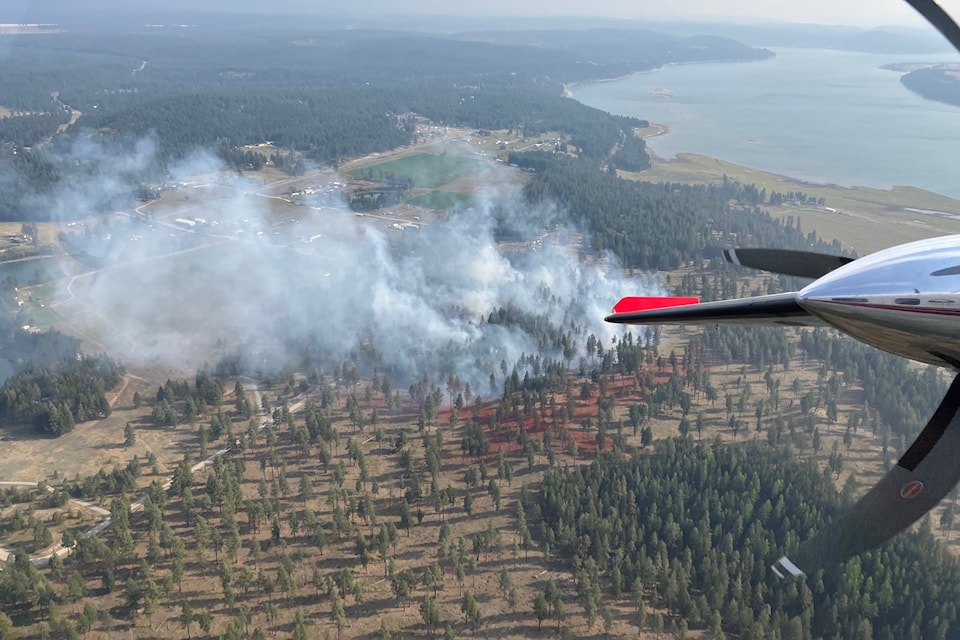An evacuation order has been issued for 10 properties and an evacuation alert has been issued for 42 properties in the Baynes Lake area of B.C.'s Kootenays as a wildfire blew up to four hectares on Monday, Sept. 9.
Emergency services personnel carried out a tactical evacuation in the afternoon, as tinder-dry conditions and gusting winds fuelled the Kikomun wildfire southwest of Fernie and southeast of Cranbrook.
鈥淭he tactical evacuation was performed by RDEK firefighters in response to the rapidly evolving situation and everyone was able to get out safely," said Loree Duczek, Regional Emergency Operations Centre Information Officer.
The wildfire has grown from half a hectare to four hectares, as of Sept. 10, and is currently being held. It is suspected to be human-caused.
According to the B.C. Wildfire Service, a response officer, unit crew, and air support is currently on site and is working alongside the Baynes Lake Fire Department. It is burning as a low vigour surface fire with areas of moderately vigorous surface fire.
Smoke is highly visible from Baynes Lake and Kikomun Creek Provincial Park.
A reception centre has been established at the Prestige Inn in Cranbrook located at 209 Van Horne Street South. Evacuees are asked to check in and register at the Reception Centre or online at ess.gov.bc.ca.
The fire is among about 220 active blazes burning in the province, and the service says more than 90 per cent of them were caused by lightning.
Environment Canada had issued air-quality advisories for several districts, but by Monday afternoon, the warnings had been lifted in all but one area in central B.C.
The smoky skies bulletin remains up for the next 24 to 48 hours for the Marilla area of B.C., bordered between Babine, Fraser, Anahim and Morice lakes.
The latest evacuation comes after the BC Wildfire Service said the fire situation is still active as above seasonal temperatures persist in the province.
The service said in its situational report posted Monday that much of B.C. remains "unseasonably dry" due to the ongoing drought, leaving fuels susceptible to ignition and fire behaviour that could increase quickly.
鈥攚ith a file from Canadian Press



